GMLRS is a precision-guided rocket system currently in service with the Royal Artillery.
Guided Multiple Launch Rocket System (GMLRS) is described by the British Army as;
The Guided Multiple Launch Rocket System (GMLRS), nicknamed the ’70 km Sniper’, provides pinpoint accuracy delivering a 200 lb high explosive warhead to its target, with twice the range of other artillery systems used by the British Army
It is currently in service with the Royal Artillery.
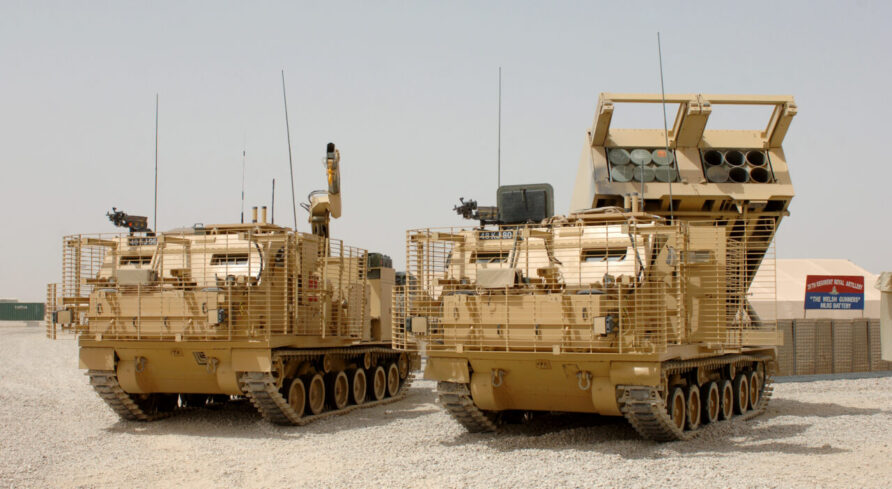
Guided Multiple Launch Rocket System (GMLRS) History
The evolution of MLRS, from the grid square removal service to GMLRS, the 70 km Sniper, is a perfect illustration of the trends in complex weapons over the last twenty-odd years.
MLRS and GMLRS have their origins in a joint German (MBB), Italian (Oto Melara) and British (Hunting Engineering) project that proposed a tracked launcher that could fire six unguided 280 mm rockets with a range of 40-60 km, called RS-80.
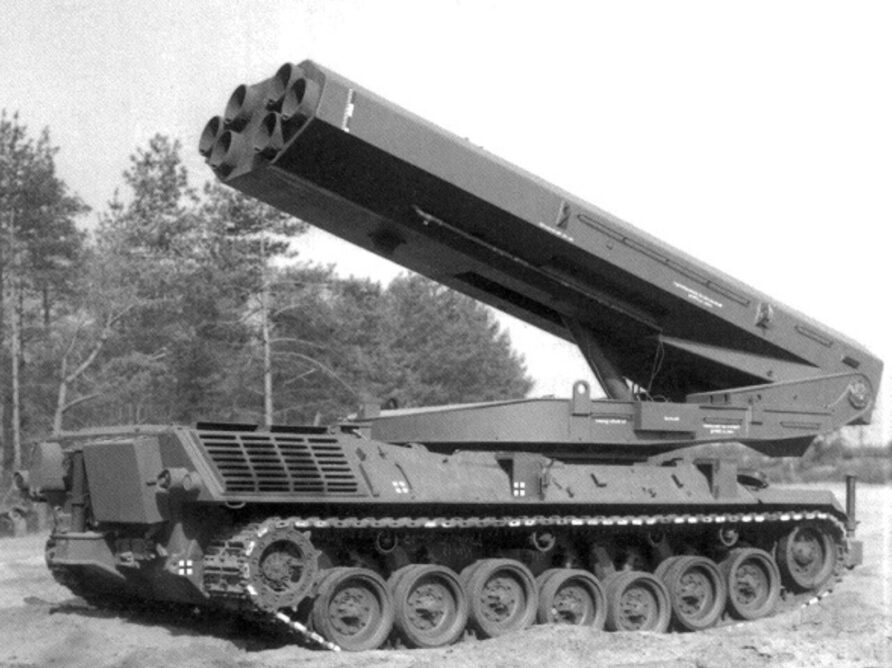
Each RS-80 rocket could carry either a single warhead or, more commonly, a submunition dispenser.
Although initial development went well, differences between the partner nations and concerns over logistics led to the project being cancelled.
The UK withdrew in 1975.
In 1976, the US Army initiated a concept study for the General Support Rocket System (GSRS), following initial work the year before.
GSRS was intended to use relatively low-cost rockets and be capable of housing multiple warheads and submunition types. Even at this early concept stage, the US Army envisaged a terminally guided variant.
Later in the same year, Vought Corporation, Boeing, Martin Marietta, and Emerson Electric were all awarded concept development contracts. It was envisaged that a down-select would take place the following year.
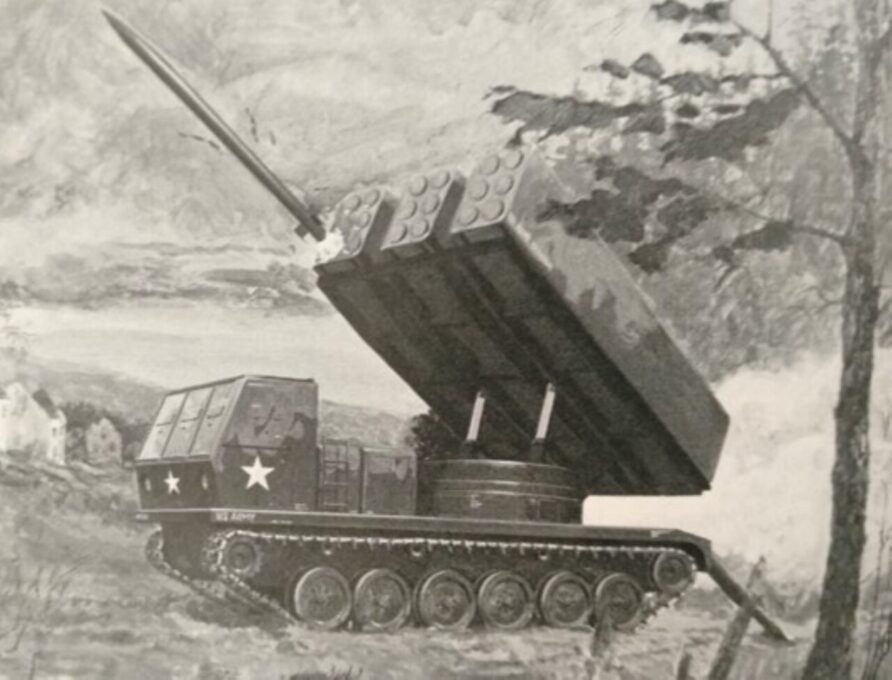
The down-select in 1977 saw Boeing and Vought awarded Cost-plus-incentive-fee contracts to design and manufacture prototypes for a competitive evaluation. The first flight took place in December 1977 and from then, the systems’ development progressed.
In July 1979, Vought conducted a test firing of a six rocket salvo, and again in November, they took out an advert to celebrate the event.
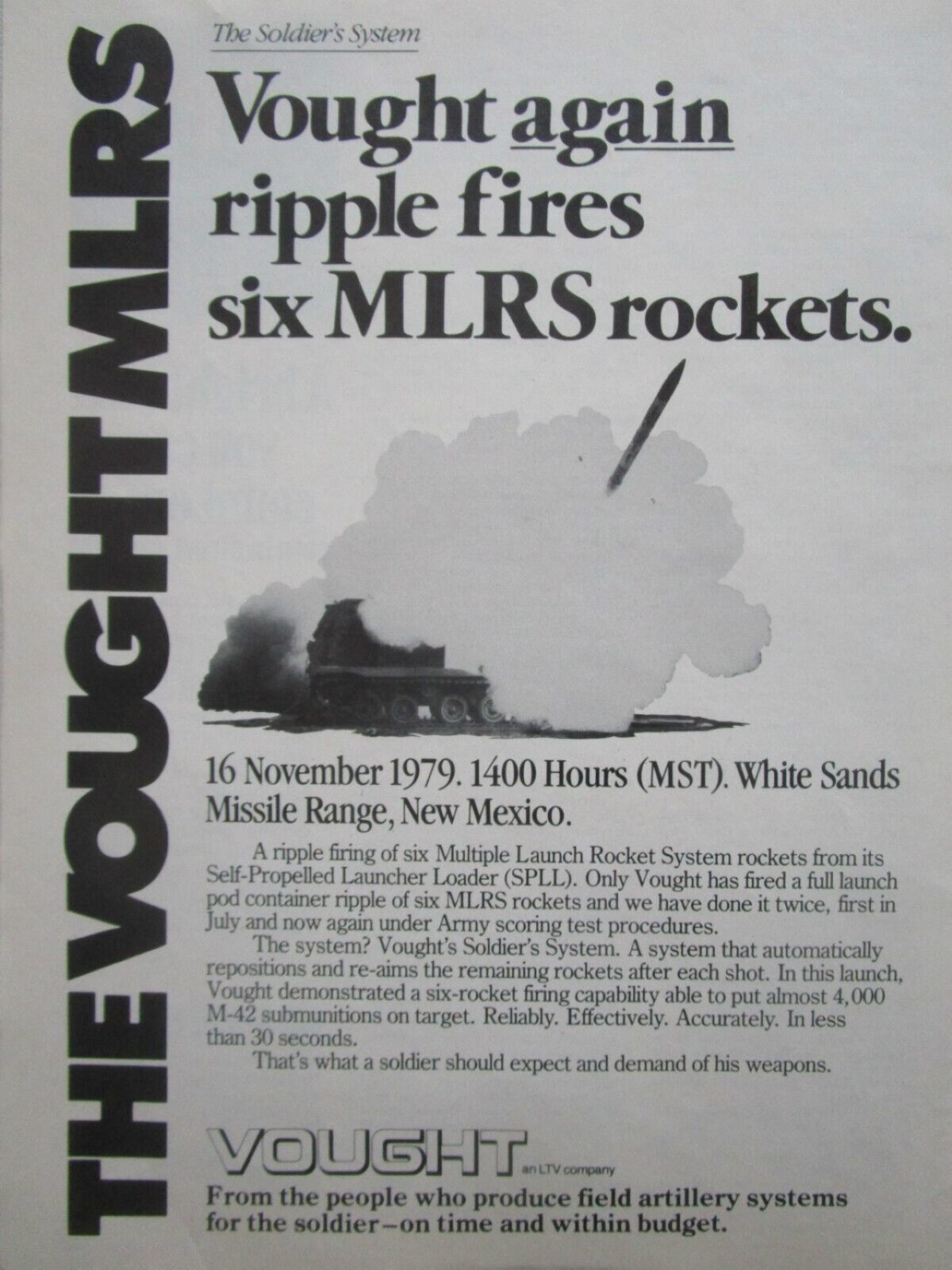
After the cancellation of RS-80, the UK, France and Germany joined the programme in July 1979, the system was renamed Multiple Launch Rocket System (MLRS) and in May 1980, Vought was named the winner.
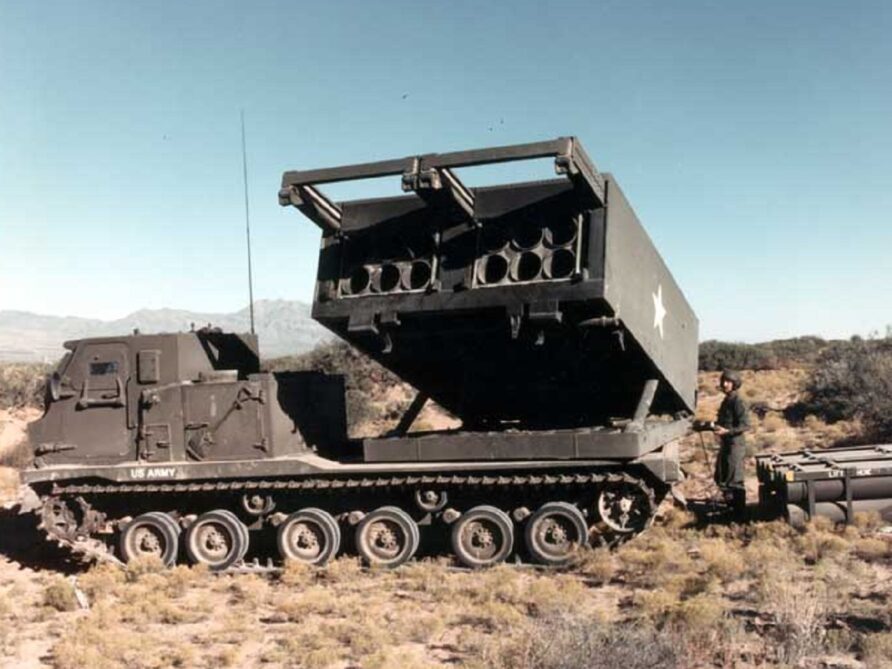
As development progressed, the roadmap was defined to include three phases;
- Phase 1; dual-purpose anti-tank/anti-personnel with M42 sub-munitions
- Phase 2; the German AT-2 scatterable anti-tank mine
- Phase 3; a new terminal guided warhead
In December 1981, contracts were awarded to General Dynamics, Hughes Aircraft Company, Martin Marietta, Raytheon, and Great Britain’s Hunting Engineering for the multinational development of the TGW. Development contracts were also let for a chemical warhead variant.
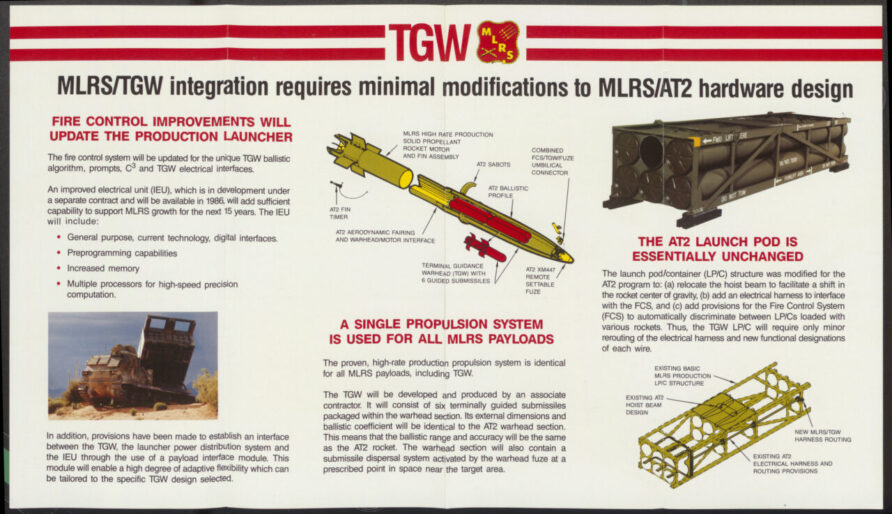
The first production Phase 1 round was delivered to the US Army in mid-1982.
Italy also joined the programme in July 1982 with full-scale production starting the year after.
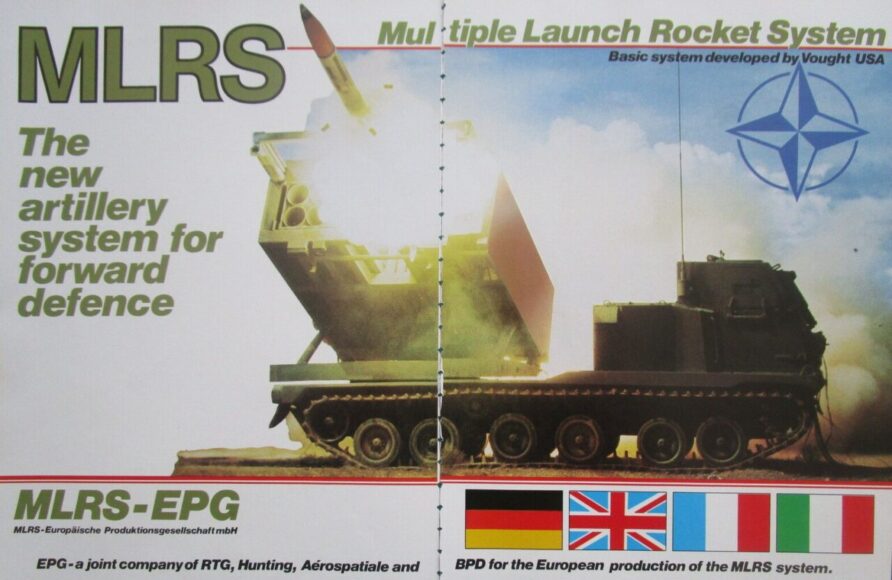
Work continued on the SADARM and TGW versions
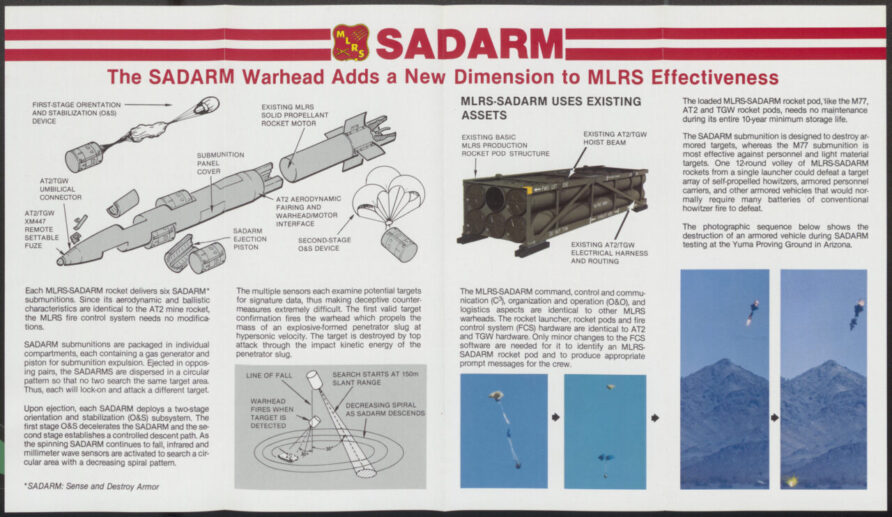
The first UK order of 64 launchers, 5,400 Phase 1 rockets and 1,404 reduced-range practice rockets was £544 million.
During the 1991 liberation of Kuwait, the US and British Army made extensive use of MLRS, to devastating effect, the first fired by 91 Alpha Battery, 21st Field Army.
The sheer destructive capability of MLRS was often a surprise, even to those manning them, generally because, in training, the scale of ammunition expenditure was significantly lower than employed in Op GRANBY. Although not connected to G/MLRS, the performance of the British 155 mm L15 shell, typically fuzed to detonate 9m from the ground, was reported of even greater influence on Iraqi forces.
The UK also experimented with a concept borrowed from Soviet doctrine, called Recce Strike. In addition to conventional deep fires and counter-battery, MLRS was tasked by reconnaissance forces to ensure momentum in the advance was maintained. On the 26th of February, elements of 16th/5th Lancers called divisional MLRS fire directly onto Iraqi forces at Objective LEAD.
Operations in the Middle East in 1991 were a double-edged sword in some regards, they reaffirmed the artillery lessons from history but clearly demonstrated that fighting the West on conventional terms was a losing proposition. Opponents would therefore start thinking about fighting beneath the threshold of such massive military intervention, or above it.
Development work commenced on the Extended Range rocket, the successor to the Basic M26, at about the same time as the chemical warhead was cancelled.
The first AT-2 scatterable mine version was test-fired in 1992.
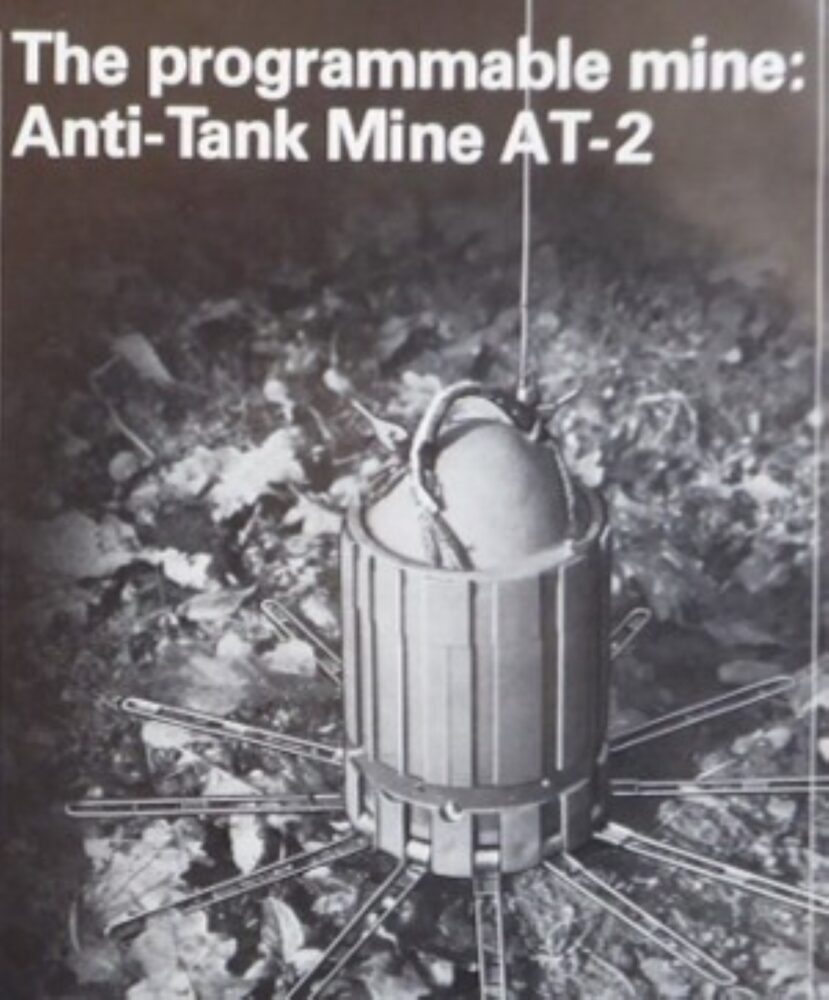
The UK also participated with the partner nations in a programme to develop the MLRS Terminally Guided Weapon (TGW), Phase 3, that contained three sub-munitions, but the US withdrew in 1993 and the programme was cancelled.
The year after, Modified (MOD) Dual Purpose Improved Conventional Munitions (DPICM) Advanced Concept Technical Demonstration (ACTD) was initiated. The Extended Range MLRS rocket entered low-rate initial production the year after.
The UK purchased both Phase 1 and Phase 2 rockets.
The introduction of MLRS was closely tied with the emerging NATO AirLand Battle doctrine. Specifically, fighting at long range with ground forces firing deep into Warsaw Pact second echelon forces, whilst remaining masked and able to deliver significant volumes of counter fires.
The Phase 3 missile, with its terminally guided anti-tank munitions, was key to this, but with the end of the Cold War, momentum and funding evaporated.
With the various terminally guided projects all mostly cancelled, the requirement for a guided MLRS emerged by the end of the nineties. This programme included the US, UK, France, Germany and Italy, MBDA signed an MOU in 2001 as the European Prime Contractor. Guided MLRS were intended to have a maximum range of 60 km, but still use the submunition payload.
The US contributed 50% of the funding for GMLRS and Italy, and the UK, Germany and France provided the balance, equally.
Several improvements to the vehicle’s and fire control system were implemented, significantly, the use of GPS.
The influence of the Oslo Convention and increasingly rigorous interpretation of laws of armed combat resulted in a general trend towards the withdrawal of cluster and submunition weapons.
The UK signed in December 1997. Although the AT-2 scatterable mine was only intended to be initiated by heavy vehicles, it was fitted with an anti-handling device. As such, it was not considered to be an anti-personnel mine (APM) but this would eventually change.
Independent research also demonstrated the unexploded rate for sub-munitions, especially when subject to realistic handling and operational conditions, was much higher than expected.
In operations where they were likely to be deployed, the potential for civilian and military casualties in the inevitable post-conflict period was thought to be counter-productive, and not worth the military advantage they provided.
Following the 1998 Strategic Defence Review, the MoD invited Lockheed Martin, LFK, Alenia Marconi, BAE Systems, Hunting Engineering and Matra BAE Dynamics to submit a proposal for the Lightweight Mobile Artillery Weapon System – Rocket LIMAWS(R).
BAE Systems and Hunting Engineering were selected to complete risk reduction studies (by 2001, Hunting Engineering became part of Lockheed Martin)
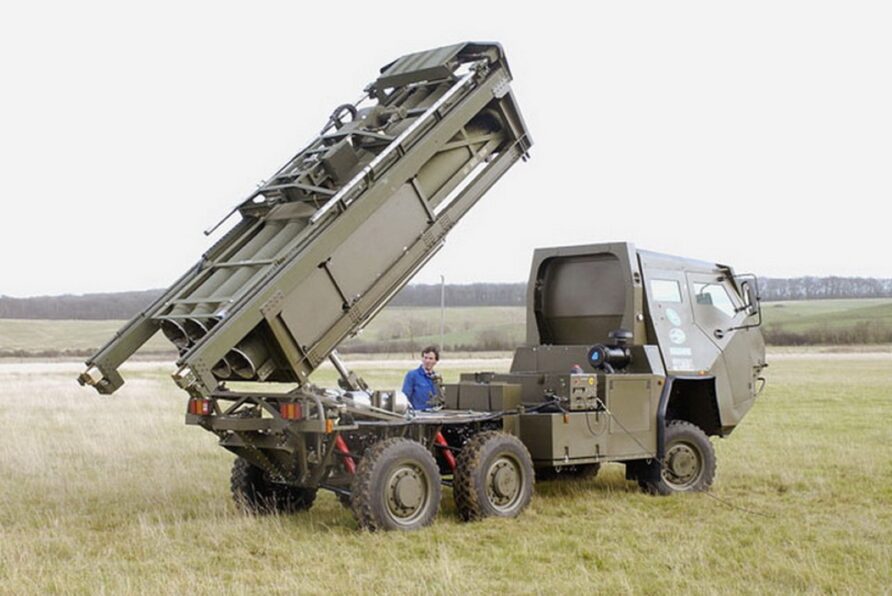
The Assessment Phase contract was won by Lockheed Martin INSYS. LIMAWS-R used a single MLRS pod of six missiles and was intended to be air-portable.
In 2005, the US Army raised an Urgent Needs Statement in early 2005 for a single, or unitary, warhead version of Guided MLRS. The first unitary warhead GMLRS was delivered to the US Army in June 2005.
The first use was in September 2005.
Whilst GMLRS was in low rate initial production for the US Army, in September 2005, the UK became its first export customer.
Soon after the £55m order was placed, the UK changed the content from the improved DPICM submunitions warhead to the unitary warhead.
Also in 2005, the UK obtained a number of Future Fire Control System (FFCS) in a £10 million FMS deal.
A separate contract was also awarded to DRS to upgrade the launcher traverse and elevation drive systems. Four vehicles were also converted to Repair and Recovery in this contract.
The required quantity of GMLRS rockets was set at 4,080 but only 1,488 were funded as part of the GMLRS programme, the balance was transferred to the unfunded Indirect Fire Precision Attack (IFPA) programme.
The LIMAWS(R) Assessment Phase completed in 2006.
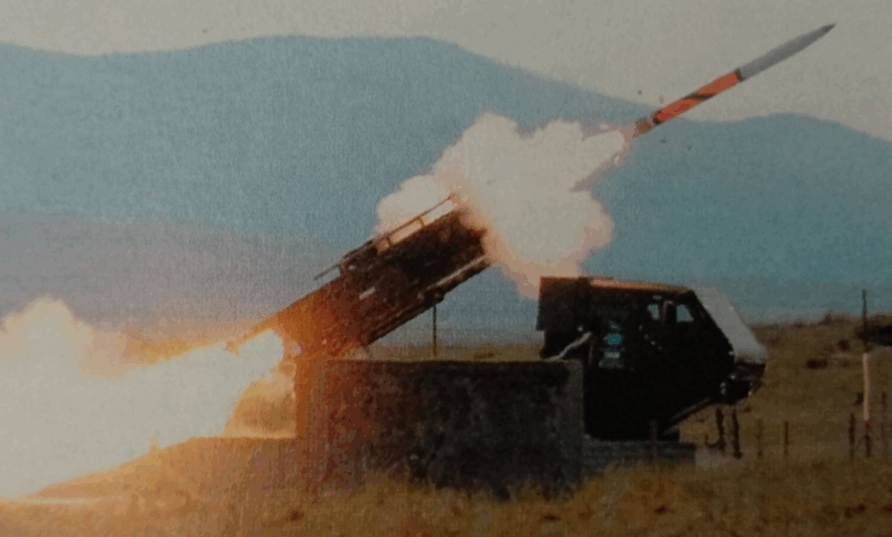
The UK withdrew its M77 bomblet and AT-2 rockets in April 2007, they had been effectively out of service for some time, the quantity revealed in a Parliamentary Question was 7,200.
A troop of GMLRS was deployed to Afghanistan in February 2007, a month before ISD was declared.
Before deploying to Afghanistan, the vehicles received a Theatre Entry Specification (TES) upgrade that included improved protection and environmental mitigation systems.
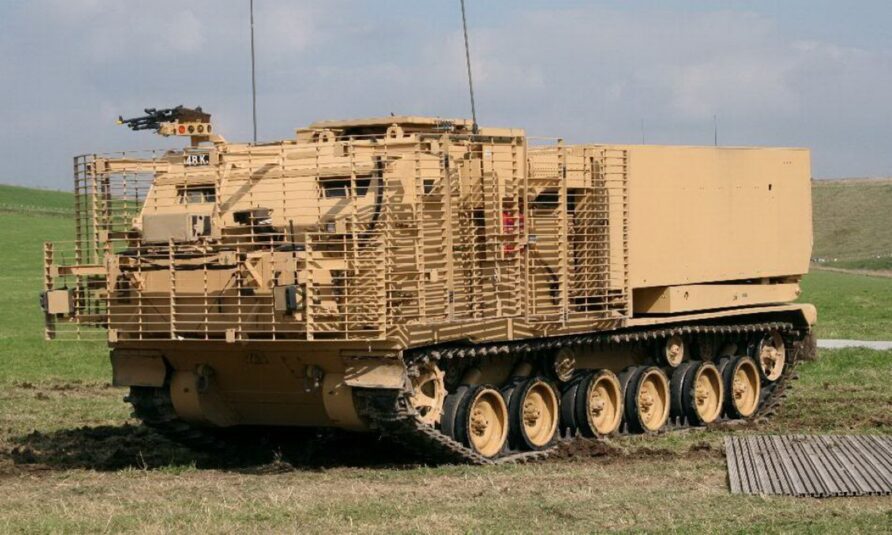
LIMAWS-R was cancelled in 2008.
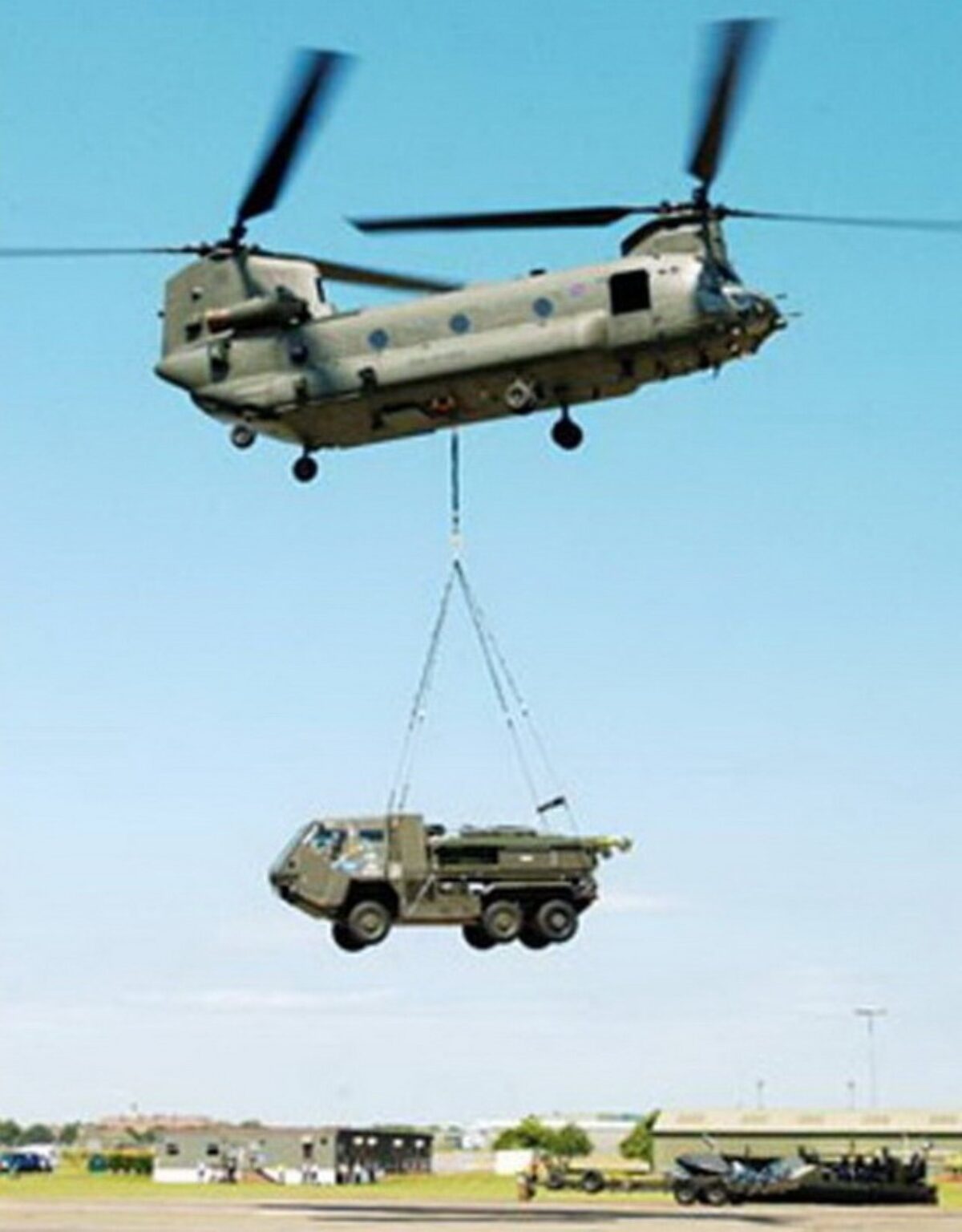
In 2011, the MoD placed a contract for the latest ‘Universal Fire Control’ system
Commodore Mark Roberts, Head of Capability Deep Target Attack, said;
Guided MLRS coupled with the Universal Fire Control System has given us an extremely precise all-weather capability. Combined with the M270B1 launcher, GMLRS has become the weapon of choice for land forces when long range (up to 70km) precision strike is required and has already proved its effectiveness in Operation Herrrick.
Several thousand GMLRS rockets were fired in Iraq and Afghanistan by the US Army, USMC and Royal Artillery, reliability exceeding 98%.
Over 25% of GMLRS firings were conducted in response to ‘troops in contact’ requests.
HERRICK Video 1
HERRICK Video 2
HERRICK Video 3
The US Army started development to bring back an area capability and extend the range of the MLRS. The Alternate Warhead Programme, and the Increment 4 programme was reported to potentially incorporate this into a longer-range rocket, up to 250 km.
Initial contracts for the production of the Alternative Warhead were issued by the US DoD in 2016 with first the production munitions delivered the same year.
This first GMLRS Alternative Warhead round coming off our Camden Operations production line represents another example of Lockheed Martin’s commitment to constantly evolve the MLRS family of munitions to meet the ever-changing requirements of our customers
Testing started on the Extended Range GMLRS in 2018.
Land Deep Fires Capability
In 2021, the MoD announced an upgrade programme for MLRS
Following a recent agreement struck with the United States Department of Defense, we will be embarking on a five-year programme to update our M270 Multiple Launch Rocket Systems (MLRS).
Upgrades will be made to 44 launchers, which are currently in-service, and will include a new armoured cab and upgraded automotive and launch mechanism components.
The upgrades will ensure that the Army’s Land Deep Fires capability remains strong for the next three decades and that the British Army has the technological capability to quickly meet the threats of today and tomorrow.
Taking advantage of the long-standing MLRS collaboration with the US and key allies, work will start on upgrading the first tranche of launchers in March 2022 with the fleet going through production over a four-year period. The upgrades will keep the equipment in service until 2050.
The work will be carried out under an existing production contract with Lockheed Martin Missiles and Fire Control with the work being carried out at Red River Army Depot and Lockheed Martin’s facility in Camden, Arkansas.
The UK is also developing UK-specific systems for the new launchers, including Composite Rubber Tracks (CRT), and a vehicle camera and radar system. A new Fire Control System will be developed collaboratively with the US, UK, Italy, and Finland.
The CRT will provide better fuel economy and allow the launcher to travel further, giving greater operational and tactical mobility to support deployed troops in a range of operating environments. A single launcher will be used to fire many payloads.
To ensure soldiers are not outranged, the Army will develop a new extended range missile with MLRS partners, to be fired from the updated launchers, which should be in-service by 2025. The Guided MLRS Extended Range (GMLRS-ER) missile will extend the Army’s reach from 84 to 150km.
The 44 updated launchers will also be able to fire the US’s Precision Strike Missile (PrSM) which has a range of 499km and is expected in-service from 2024. These weapons will place the British Army at the cutting edge of global deep fires capability, ready to respond to long range air defence and missile threats presented by hostile actors.
There was also some speculation in 2022 that the MoD was seeking to expand launcher vehicle numbers beyond the 44 upgrades described above.
The MoD closed the Reduce Range Rocket training area in Otterburn in 2023, with stocks of the practice round expended the same year. Live firing will be conducted in Finland or other non UK training locations, and greater use of simulation in the UK.
VRAI Simulation were awarded a £288k Defence and Security Accelerator (DAS) contract in April 2024 to develop a data driven tactical simulator for the Multi Launch Rocket System (MLRS).
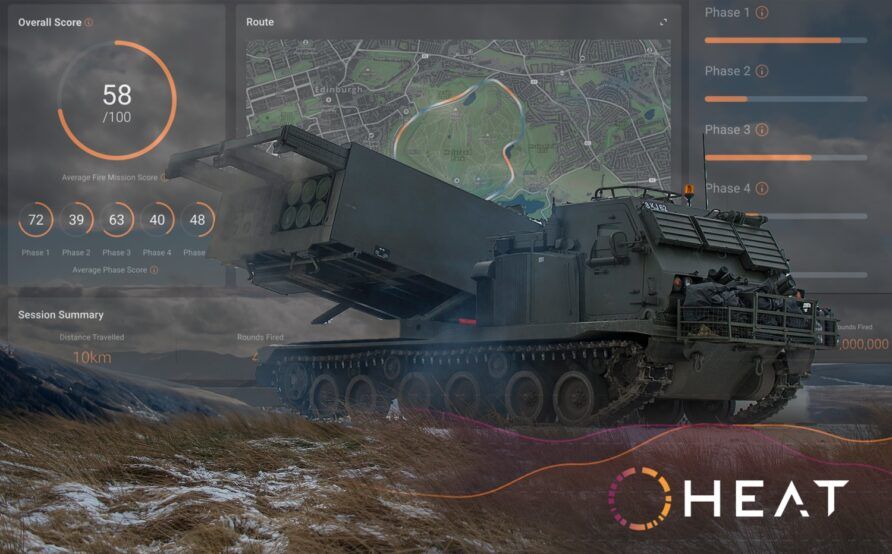
GMLRS is currently in service with the 26 Regiment Royal Artillery and 101 Regiment Royal Artillery (Army Reserve).
Initial operating Capability is scheduled for 2026 and the Out of Service Date for the new vehicles is 2050.
As at February 2024, no firm decision has been announced on the Precision Strike Missile.
Tobias Ellwood Conservative, Bournemouth East
To ask the Secretary of State for Defence, whether he has plans to purchase precision strike missiles.
James Cartlidge The Minister of State, Ministry of Defence
The Ministry of Defence (MOD) keeps its capability requirements under review to ensure that we have a balanced and affordable capability portfolio which best meets our needs. As part of this ongoing work, the MOD is reviewing elements of its Land Deep Fires Programme, to ensure best Value for Money and the most appropriate military capabilities for the UK now and in the future.
https://www.theyworkforyou.com/wrans/?id=2024-02-06.13254.h
The final and specific numbers of vehicles for Land Deep Fires Capability remains subject to some minor speculation, but it will equip three regiments, two regular and one reserve.
Considering those gifted to Ukraine, and replacements from others, the expected fleet of M270 launch vehicles is circa 75, supported by circa 10 Repair and Recovery Vehicles.
Before reading on, would you mind if I brought this to your attention?
Think Defence is a hobby, a serious hobby, but a hobby nonetheless.
I want to avoid charging for content, but hosting fees, software subscriptions and other services add up, so to help me keep the show on the road, I ask that you support the site in any way you can. It is hugely appreciated.
Advertising
You might see Google adverts depending on where you are on the site, please click one if it interests you. I know they can be annoying, but they are the one thing that returns the most.
Make a Donation
Donations can be made at a third-party site called Ko_fi.

Think Defence Merch
Everything from a Brimstone sticker to a Bailey Bridge duvet cover, pop over to the Think Defence Merchandise Store at Red Bubble.
Some might be marked as ‘mature content’ because it is a firearm!
Affiliate Links
Amazon and the occasional product link might appear in the content, you know the drill, I get a small cut if you go on to make a purchase
Guided Multiple Launch Rocket System (GMLRS) Capabilities
Guided MLRS consists of three main components.
- Launch Vehicle
- Rocket
- Launch Pod Container
Launch Vehicle
Although it ultimately did not enter service, the Supacat/Lockheed Martin LIMAWS(R) programme demonstrated that an M30 GMLRS rocket could be fired from a lightweight vehicle (8.8 tonnes).
In addition to progressing the use of an M30 to test firing, work was also completed on confirming suitability for ATACMS and the Reduced Range Practice Rocket.
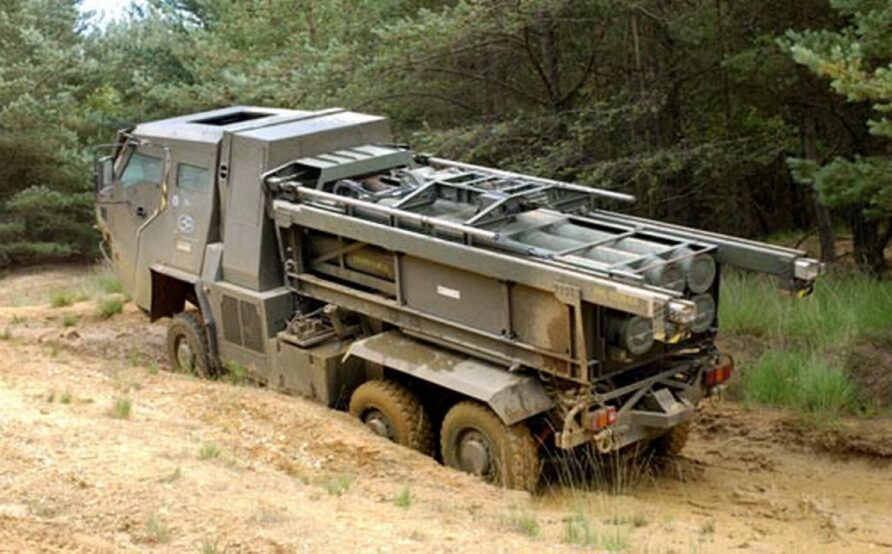
An eight-round firing trial was concluded in 2005 at Benbecula.
The launch vehicle in service with the Royal Artillery is the M270B1, similar to the US M270A1 but with a UK-specific protection package and other minor modifications.
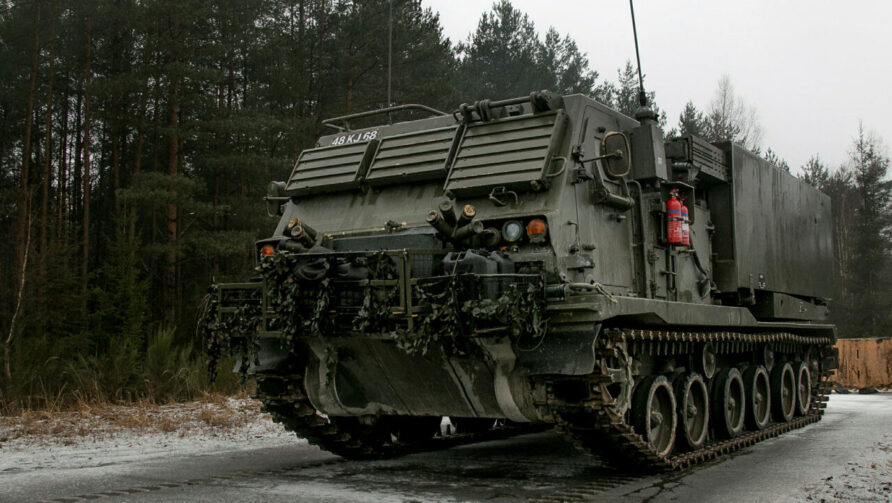
The M993 Carrier Vehicle is based on the US Bradley infantry fighting vehicle, with the M269 Launcher Loader Module carrying the rocket pods.
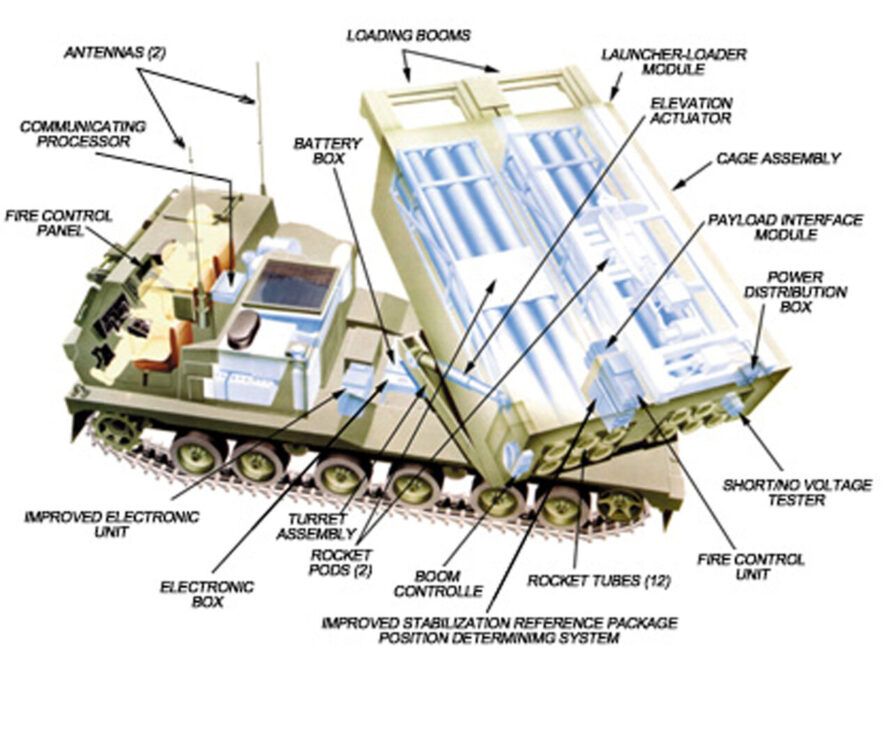
The M270A2, and the UK’s slightly different version, the M270B2, are the latest launch vehicles, with Soucy continuous rubber tracks and situational awareness cameras.
It will also a new Common Fire Control System (CFCS), Improved Armoured Cab (IAB), multi spectral camouflage, and an upgraded loading system and engine.
Although self-evidently not a launch vehicle, less well-known, there is also a repair and recovery variant in service.

The upgrade programme includes these less well-known vehicles, shown below, and with what appear to be conventional tracks, not the Soucy CRT.
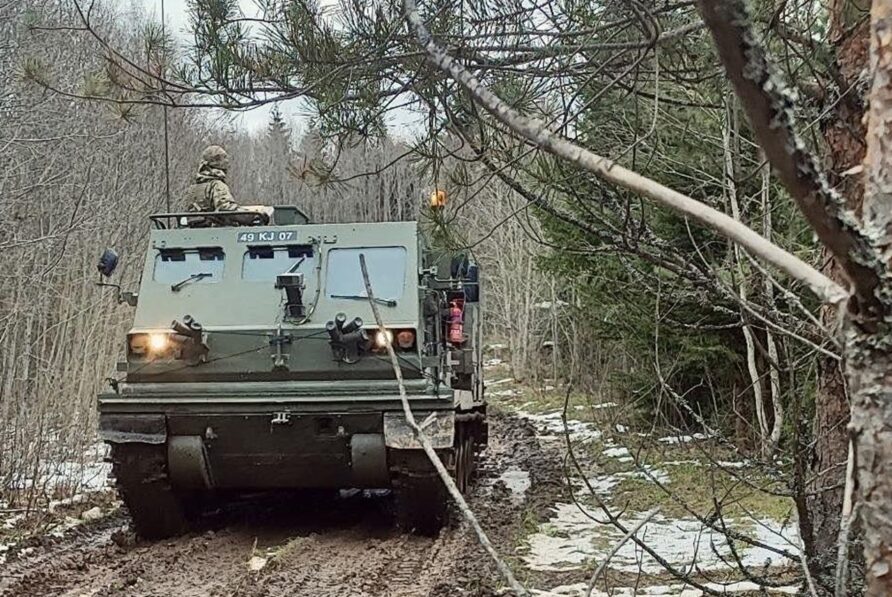
Although there is often discussion on HIMARS, the British Army has no published plans to bring into service a wheeled launch vehicle (in 2022)
For completeness, and before HIMARS, there was a proposal for a lightweight launcher.
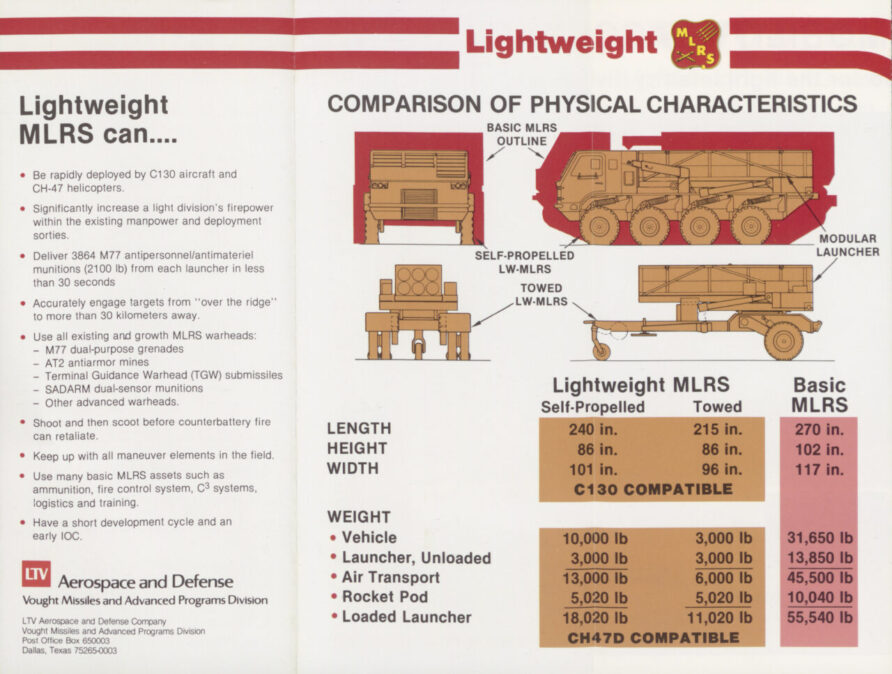
GMLRS Rocket
In Service Rockets
The GMLRS rocket consists of three main components; the rocket motor, warhead, and guidance system.
The M31 GMLRS rocket is 3.94m long, 227 mm in diameter and weighs 302 kg.
Of that 302 kg, 90 kg is the single blast fragmentation warhead.
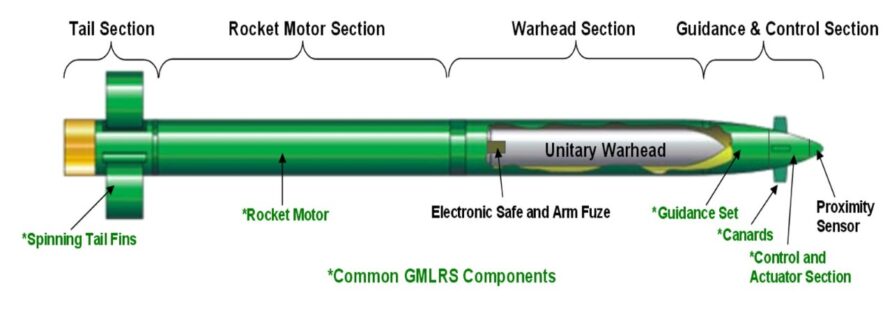
The maximum range of GMLRS, like many similar systems, has a public and a private dimension, despite being widely described as a 70 km weapon, anecdotal evidence from Afghanistan and latterly Ukraine, indicates some shots have been taken at 100 km plus.
The guidance system uses a combination of inertial navigation and jam-resistant GPS, accuracy is reportedly extremely high and some reports from Afghanistan indicated that rounds were fired into wells (where the wells were used as entrances to storage complexes).
The near-vertical terminal trajectory has also proven to be extremely useful in urban environments.
The fuze has three modes; point, delay, and air burst (selectable at 3m and 10m)
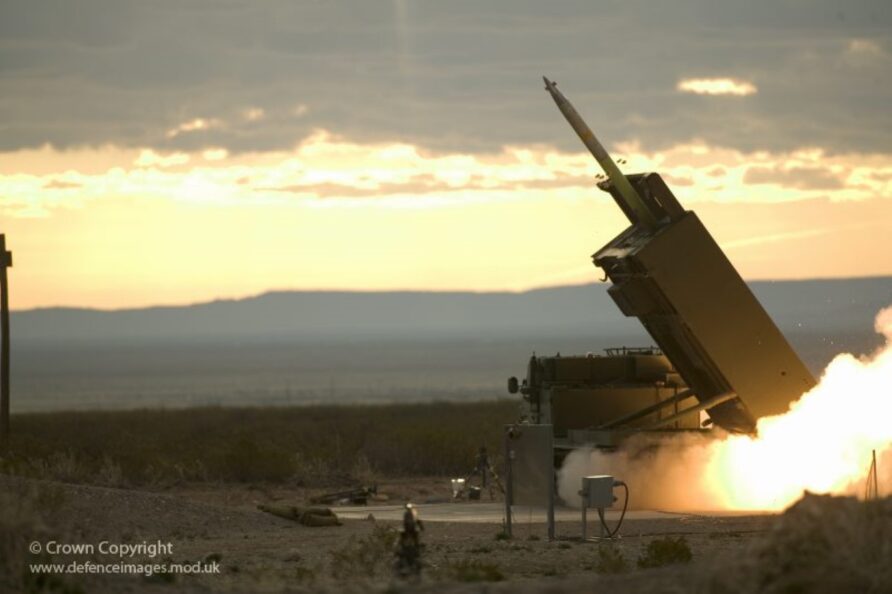
Although one should never compare US prices with UK prices, the 2014 cost for a single M31 GMLRS rocket was $110, 255.
There are several variants of the M30 and M31
- M30A1: Alternative Warhead
- M30A2: As above, but uses an Insensitive Munition Propulsion System (IMPS)
- M31: 90 kg Unitary Warhead
- M31A1: Improved fuzing system to allow airburst options
- M31A2: The same Insensitive Munition Propulsion System (IMPS) as the M30A2
Only the A2 variants of the M30 and M30 rockets have been in production since 2019.
The UK does not have any M30 variants in service.
Practice Rockets
The UK version of the Low Cost Reduce Range Practice Rocket is shown in use below, allowing live firing on UK ranges (although as above, this will no longer be used)
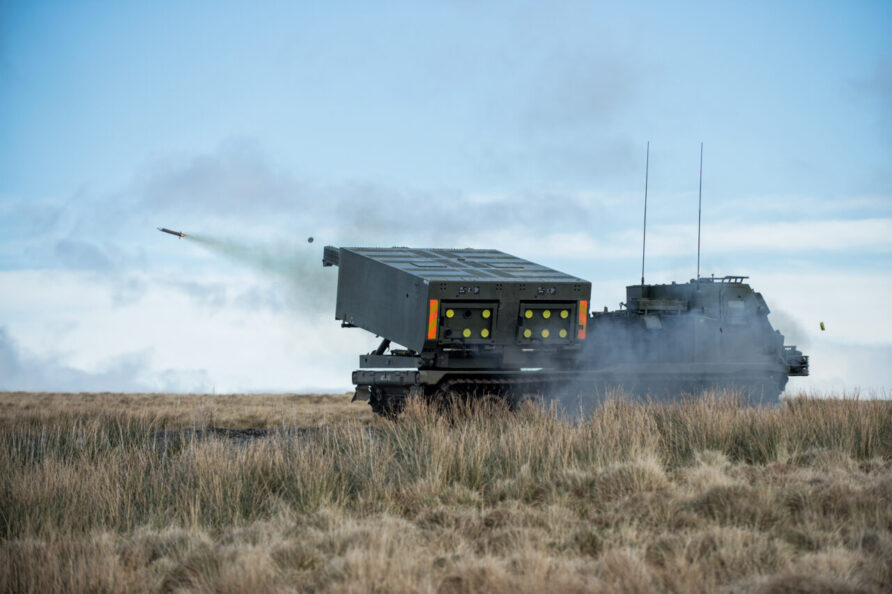
This uses a reduced diameter round, 70 mm, designated the L1A2 in UK service.
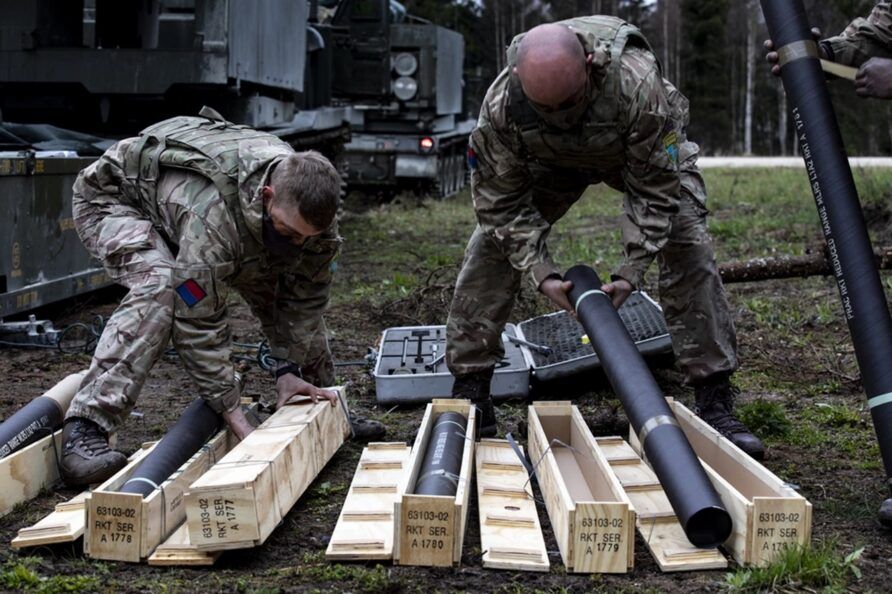
A version that uses the same calibre as the conventional rockets but uses a blunt nose, is also available, although not in service with the UK.
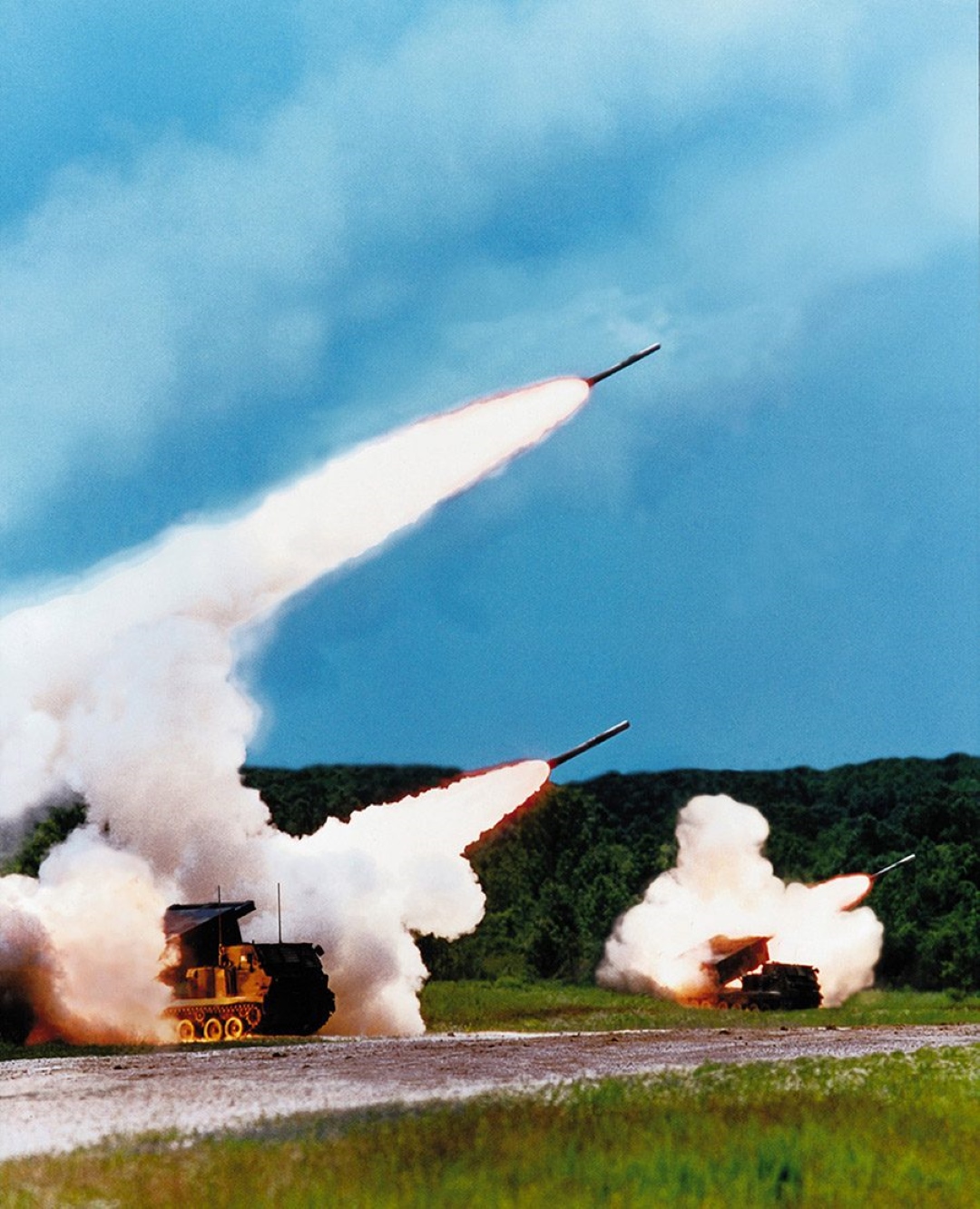
Longer Range Rockets
The 120 km option, GMLRS+, is not in service in the UK, although it is planned to bring into service the 150 km GMLRS-ER, or extended range version, as a component of the Land Deep Fires Programme.
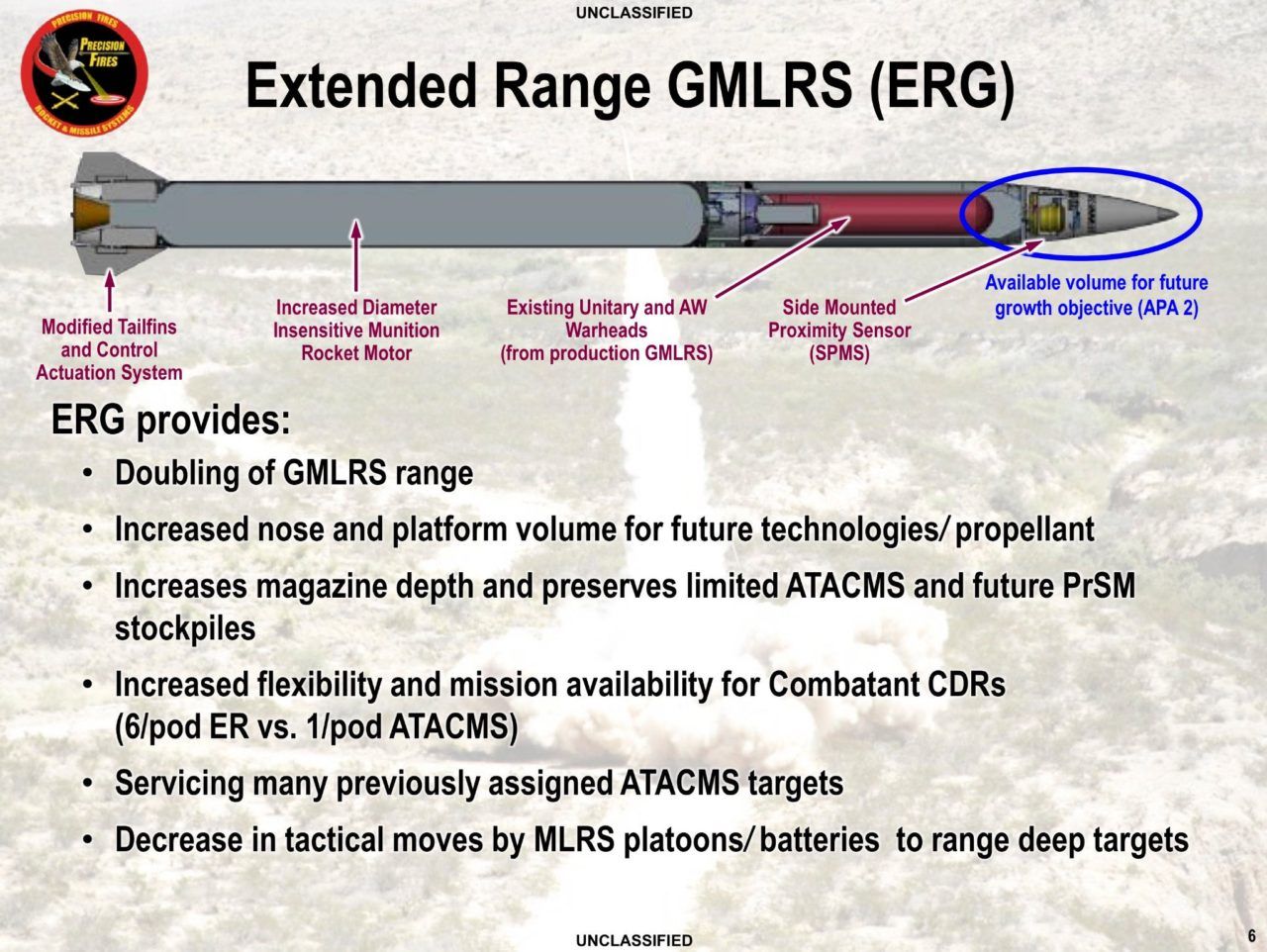
The minimum range is 10-15 km, and it will use the same unitary warhead as the existing M31
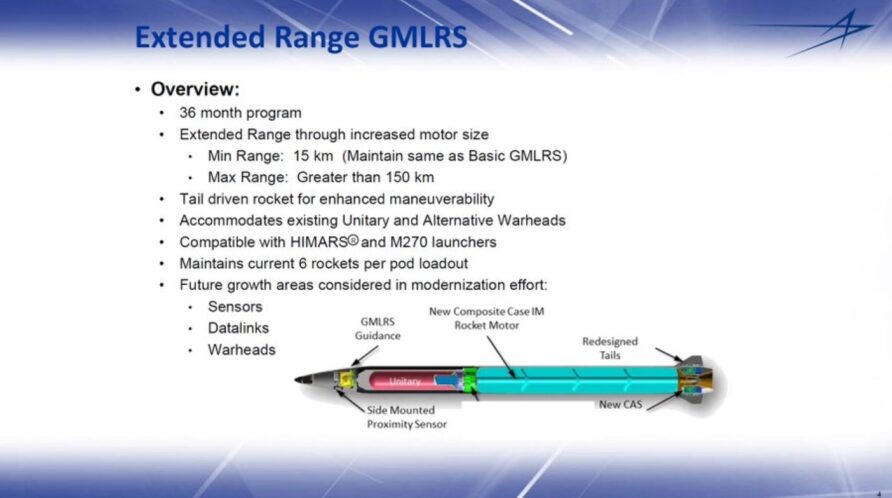
As can be seen from the diagrams above, GMLRS-ER moves the control surfaces to the rear of the rocket. It also has a modular nose cone with some spare volume for future growth and alternative seekers or data links.
The 150 km ER-GMLRS was scheduled to enter the US Army service in 2023, although qualification testing was still underway in December 2023.
Land Precision Strike and Precision Strike Missile are covered in separate posts.
The Alternative Warhead Programme
By removing the dependence on distance for accuracy, GMLRS allows fewer munitions to be used for a given target. It also means that the firing point can be vacated much quicker than might otherwise be the case, even with the fast-firing M270B1 launch vehicle.
However, because the only version the UK now has in service is the unitary warhead GMLRS, the UK no longer has the capability for area suppression or destruction of dispersed targets without accurate targeting data. In a post-cold-war COIN environment, the sparseness of area targets neatly dovetailed with the desire to reduce the post-conflict effects of UXOs. Instead of deep fires, the majority of GMLRS use has been supporting ‘troops in contact’, often as a surrogate
This desire to return GMLRS to the wide-area game has resulted in the Alternative Warhead Programme, lately given a big push by Vladimir Putin’s actions in Ukraine and Syria.
Area effects are back in fashion.
Although the UK does not have in service the Orbital ATK GMLRS-AW (M30E1) Milestone C warhead, in theory, it should be a relatively simple drop-in for the unitary variant as the rocket motor and guidance system are common to both. Instead of the unitary warhead, the AW carries 160,000 preformed tungsten fragments.
Alternative Warhead
The AW would be available to the UK if so selected.
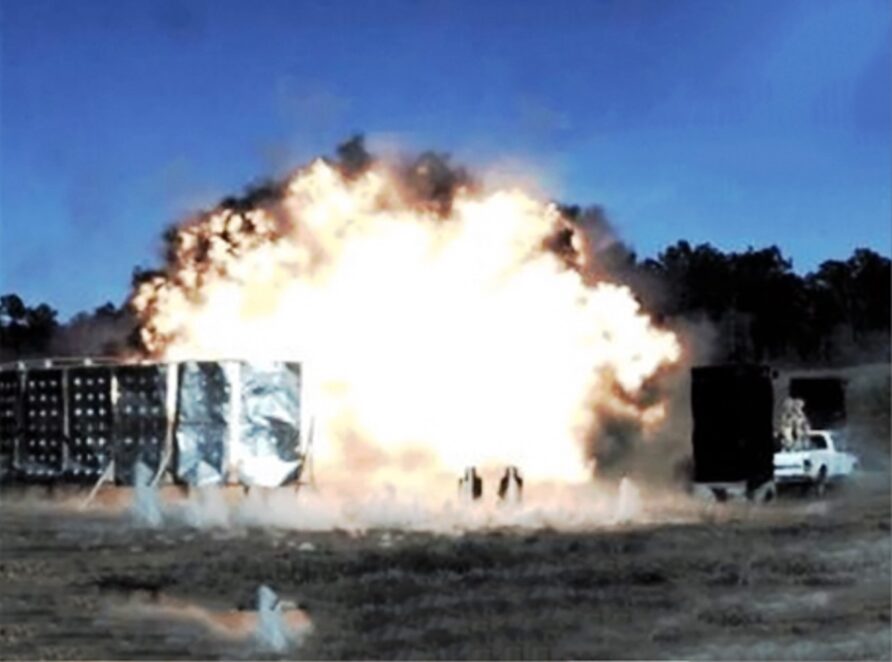
G-SMArt
Anti-armour submunitions, especially the German SMArt, have long been on the Royal Artillery’s wish list in various programmes but have always been the bridesmaid, never the bride.
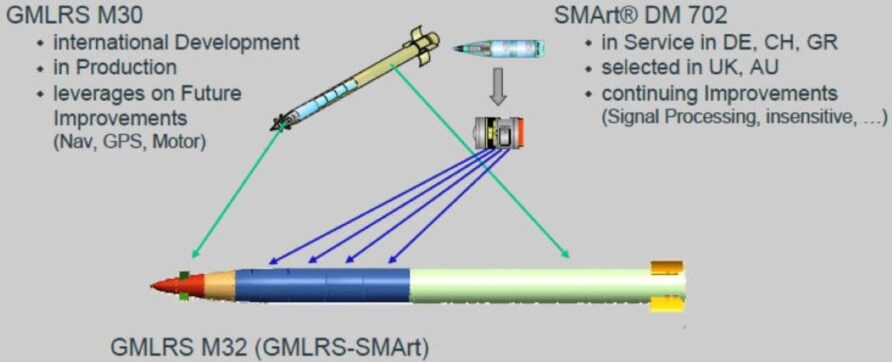
Dhiel has proposed the development of GMLRS to include four anti-armour-guided submunitions, called G-SMArt. (above)
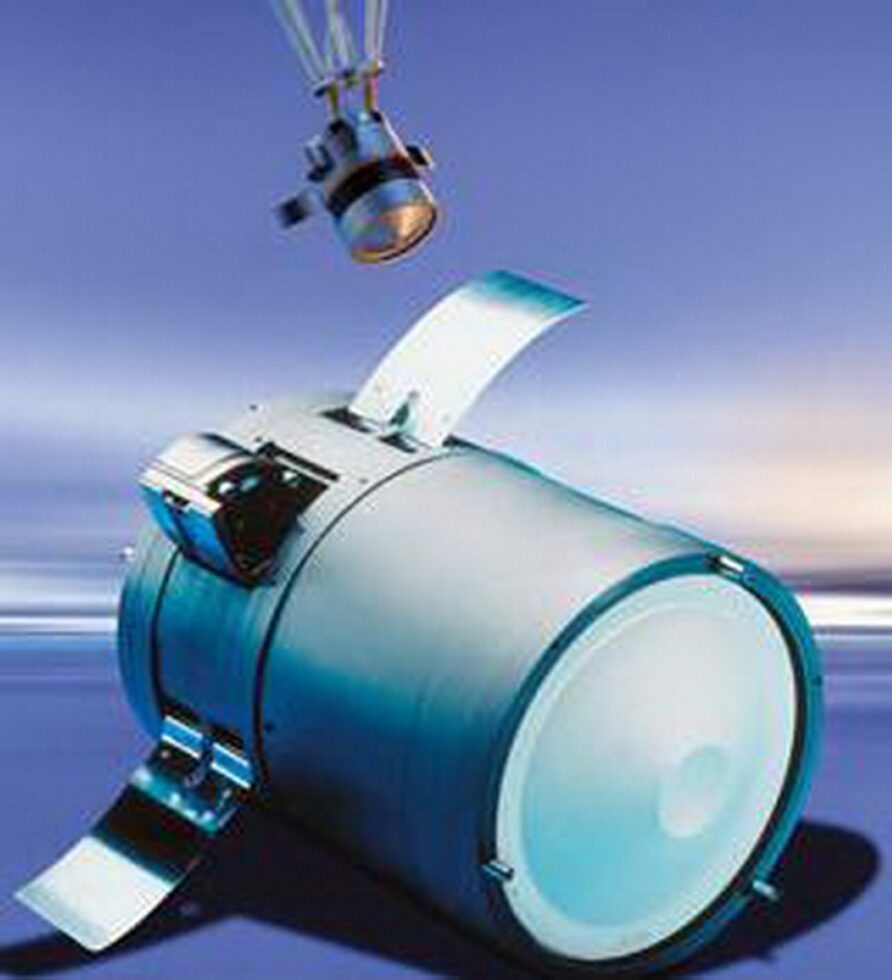
Textron systems are another proponent of sensor fuzed submunitions for the anti-vehicle role, although their efforts seem to have fallen on deaf ears.
Launch Pod Container
Individual rockets are packaged in a 6-round pod called the Launch Pod Container (LPC). Guided Missiles like ATACMS use
Each container carries identical rockets.
The M270B1 launch vehicle carries two LPC’s for a total of twelve rounds. The 300 km range ATACMS rocket is also available in the same dimensions as the GMLRS LPC, although they are designated Guided Missile Launch Assembly.
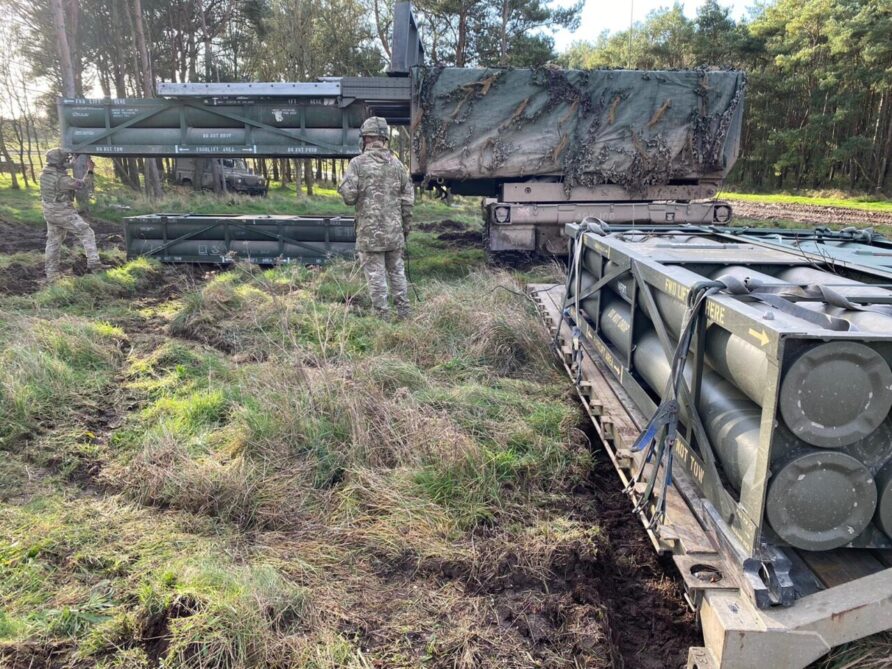
Each LPC is self-loaded onto the launch vehicle using an integral crane.
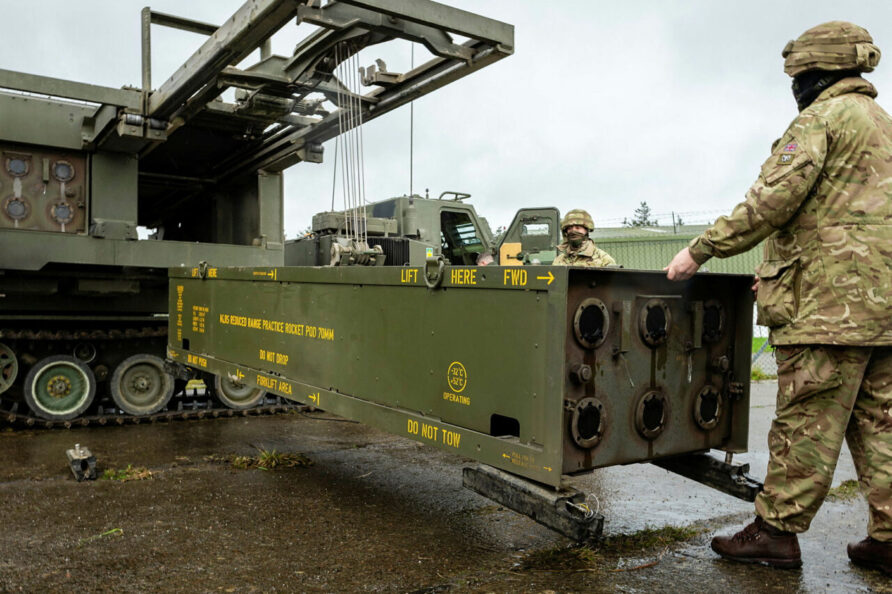
This is one of the great strengths of the MLRS/GMLRS system, the ability to load LPCs or GMLAs onto a flat rack that can be carried inside a standard ISO shipping container.
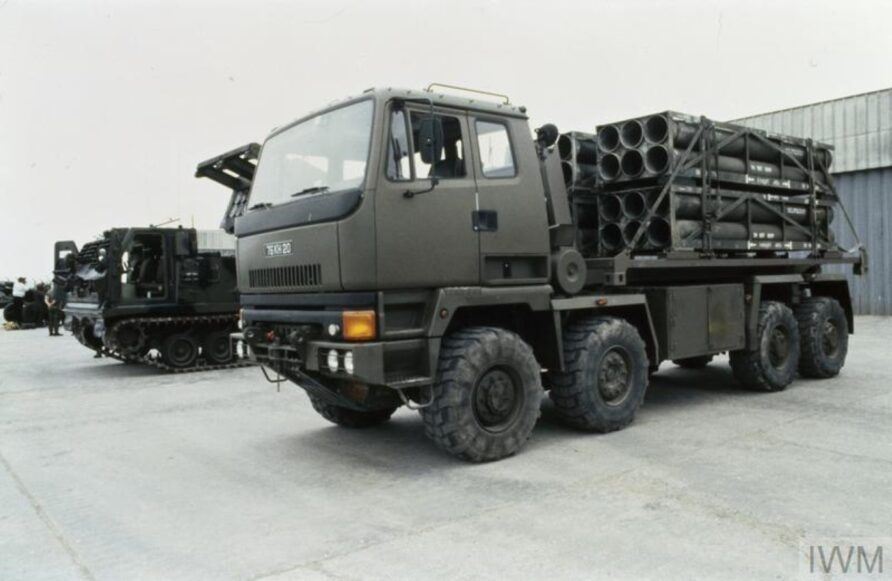
The slewing launcher loader module can unload a spent LPC, reposition to a ground-dumped full LPC and quickly reload.
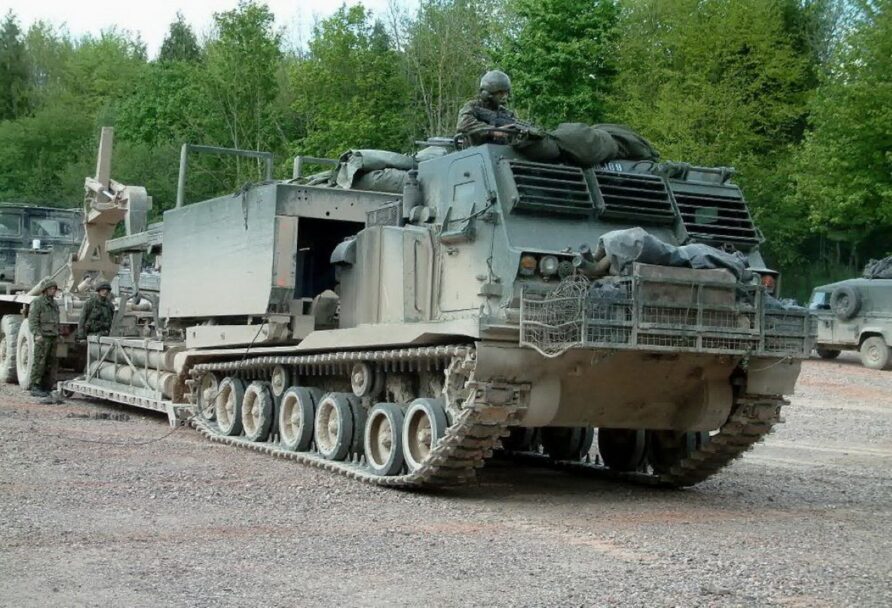
It is all about speed.
The USA is working on alternative Modern pod concept
Change Status
| Change Date | Change Record |
| 30/05/2016 | Initial issue |
| 29/07/2021 | Update and format refresh |
| 08/11/2022 | Removed ATACMS and PRSM to Land Precision Strike article |
| 05/05/2024 | Updates on Land Deep Fires Capability |
Discover more from Think Defence
Subscribe to get the latest posts sent to your email.



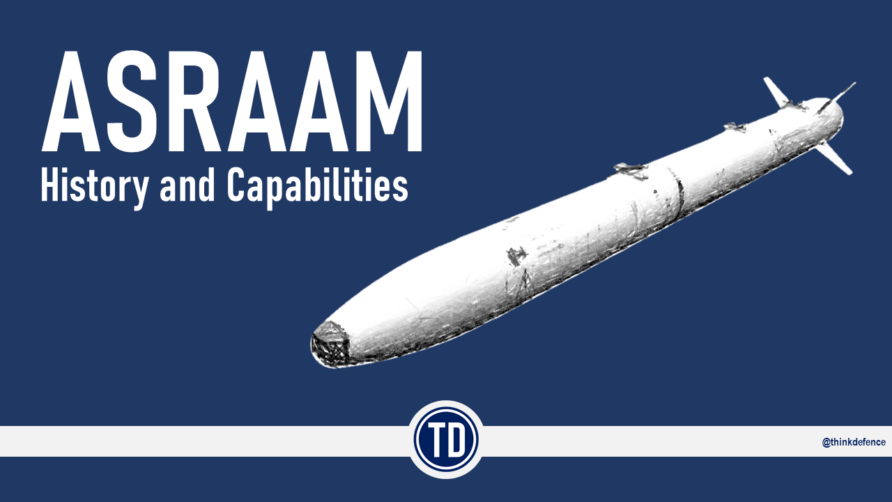
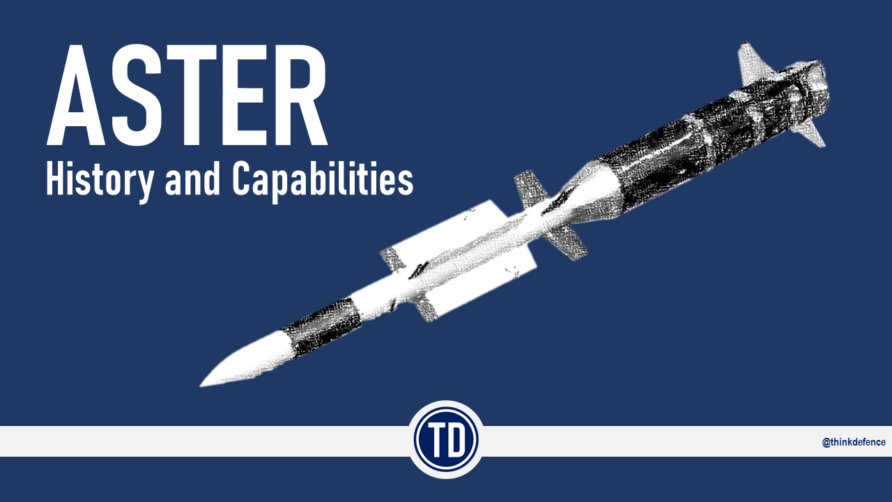
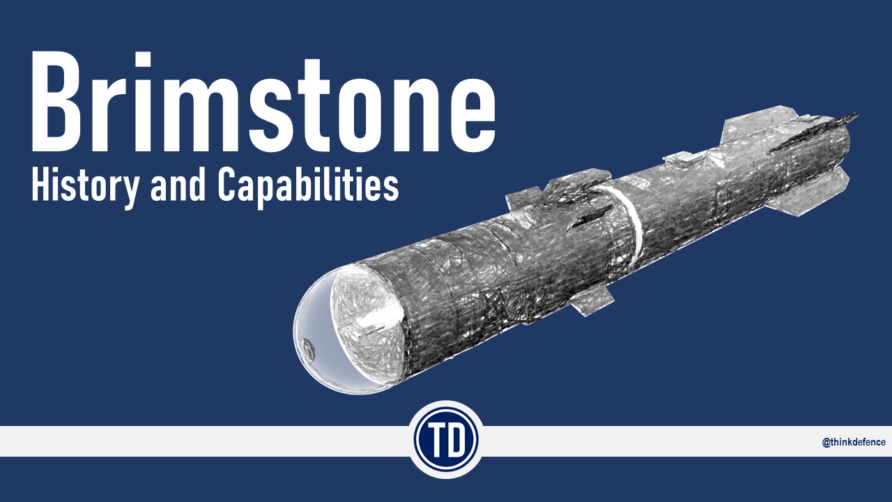
Great article! Any info on the peak altitude and speed of the rockets? I see no way any mobile AA system can detect them at height or intercept at the speed….